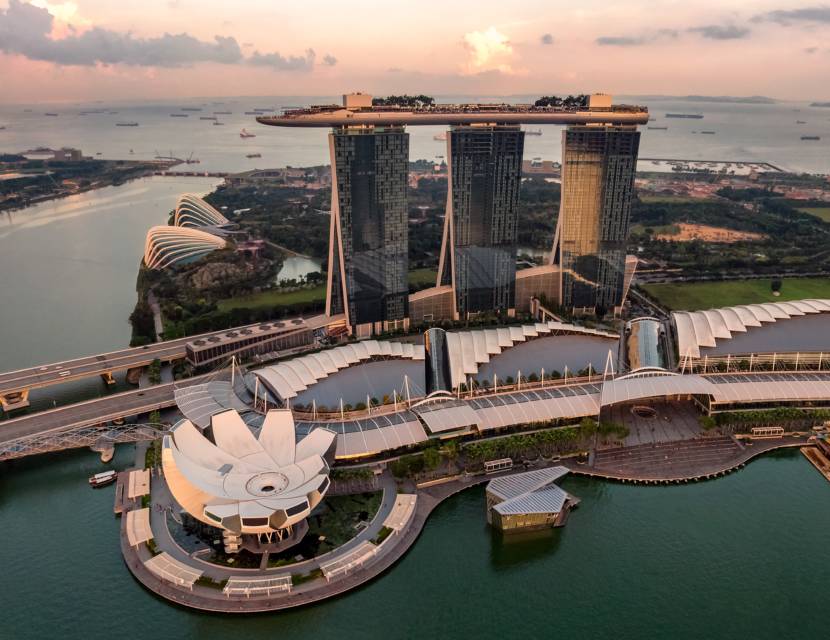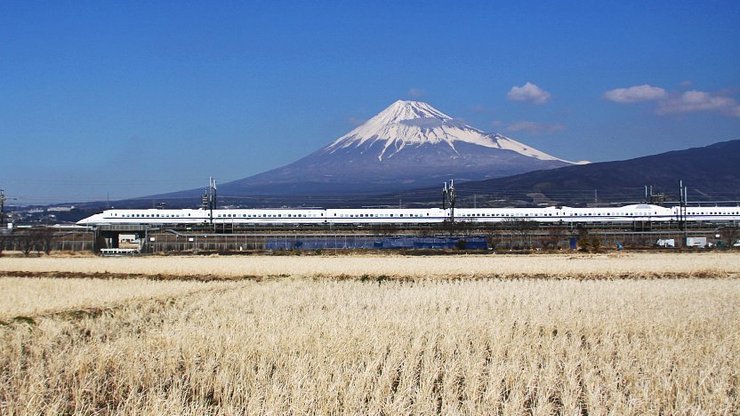Top Infrastructures in the World
There are many factors that comprise a successful and thriving economy. A major aspect of that is infrastructure, namely transport and utilities. The most successful economies in the world have large-scale and efficient infrastructure. These footings require continual investment and innovation to cater to the ever changing social and economic wellbeing of each country.
In this blog, we explore what are the contributing factors that make countries with some of the best infrastructures in the world to have thriving and successful economies.
SINGAPORE

Singapore might be a small island but it is focused on keeping the country as connected as possible through its inner workings or its international ports. For instance, their MRT network is the oldest in Southeast Asia; opened in 1987. According to the Land Transport Authority Singapore (2020), it is the most comprehensive rapid transit system in Southeast Asia and is also the busiest, with an average daily ridership of 3.384 million in 2019. The infrastructure facilitates their day-to-day operation among its people and for businesses to prosper.
NETHERLANDS

The Netherlands is powered by top-tier seaports and airports, a vast network of roads and rail, and a 100% digital telecommunications network. It ranks among the world’s best for quality, speed and reliability. The railway network itself boasts around 1.1 million passengers users every day, operated by the state-owned Nederlandse Spoorwegen. In this digital age, as we go through rapid digital transformation, Holland equips itself with an infrastructure often overlooked by most countries; the telecommunications network. Their steady GDP growth of 2.6% since 2012 (World Bank Group, 2020) as compared to its neighbouring countries, proves how much infrastructure affects the country’s overall development.
SWITZERLAND

Switzerland is situated interconnecting burgeoning areas of the EU which is France, Germany, and Italy. Their major trading hub is the port of Basel on the Rhine. It is equipped with efficient connections between rail, road, and water routes, showcasing all of its top-notched infrastructure in one location. A country booming with tourists for its scenic mountains and countryside, according to Boston Consulting Group, in 2017, Switzerland’s train network ranks first with a rating of 7.2, for its “excellent intensity of use, notably driven by passenger traffic. It also has a good rating for quality of service and a very good rating for safety.”
HONG KONG

Hong Kong is the business pivot of Asia. It is one of the easiest places in the world to do business due to its up-to-date travel, logistics and telecommunications network. The long history of its thriving port has also been a point of their mutating infrastructure journey. Its inner workings have advanced construction and seamless transportation networks that allows its people and businesses to thrive effortlessly. One fine example is its Mass Transit Railway, MTR. It was ranked number one metro system in the world in 2017 by CNN and is one of the most profitable metro systems in the world as well.
JAPAN

An innovator, Japan’s infrastructure sets an example to other countries in the world. Not to mention, it undergoes regular upgrading and expansion. One of the key advantages that they have is the fact that both the public and private sectors take on copious infrastructural projects and manage their respective facilities. It is most known for high-speed bullet trains, the Shinkansen, one of its examples of aiding economic growth through efficient accessibility and mobility. And the exportation of these technologies to other countries contribute to its economy being the third largest in the world by nominal GDP.
INFRASTRUCTURE AND TECHNOLOGICAL ADVANCEMENTS
What is good to note about the continuity of infrastructure developments is that we are constantly bridging the information and resources for continuous and sustainable economic and societal growth, across countries. Over the years, countries converge with one another to collaborate on creating the most efficient infrastructure by sharing engineering innovations and technologies, such as the partnership between Gamuda and Herrenknecht which was fostered when the Group and MMC Corp Bhd undertook the construction of the Stormwater Management and Road Tunnel (SMART Tunnel) in 2003.
Listed by CNN as one of the world’s Top 10 greatest tunnels, the 9.7km dual-purpose SMART Tunnel is the world’s first traffic and stormwater management tunnel.
The partnership between Gamuda and Herrenknecht over the years also culminated in the advancement of tunnelling technologies through the creation of Variable Density Tunnel Boring Machine (VD-TBM), with the MRT Kajang Line having the first in the world to deploy this cutting-edge technology. Having to stunned the world with efficacy of the VD-TBM, the Group also innovated another tunnelling disrupter through the creation of Autonomous Tunnel Boring Machine (A-TBM), which won the 2019 Technical Product/Equipment Innovation of the Year award at the International Tunnelling and Underground Space Association (ITA) and Innovation in Tunnel Excavation award at the NCE Tunnelling Festival.
The continuous development of infrastructure spurs innovation and talent development, in addition to allowing economies to thrive and prosper. Hence, infrastructure is important, not just to move the economies, but also to enhance the growth of technological innovations to future-proof ourselves.

